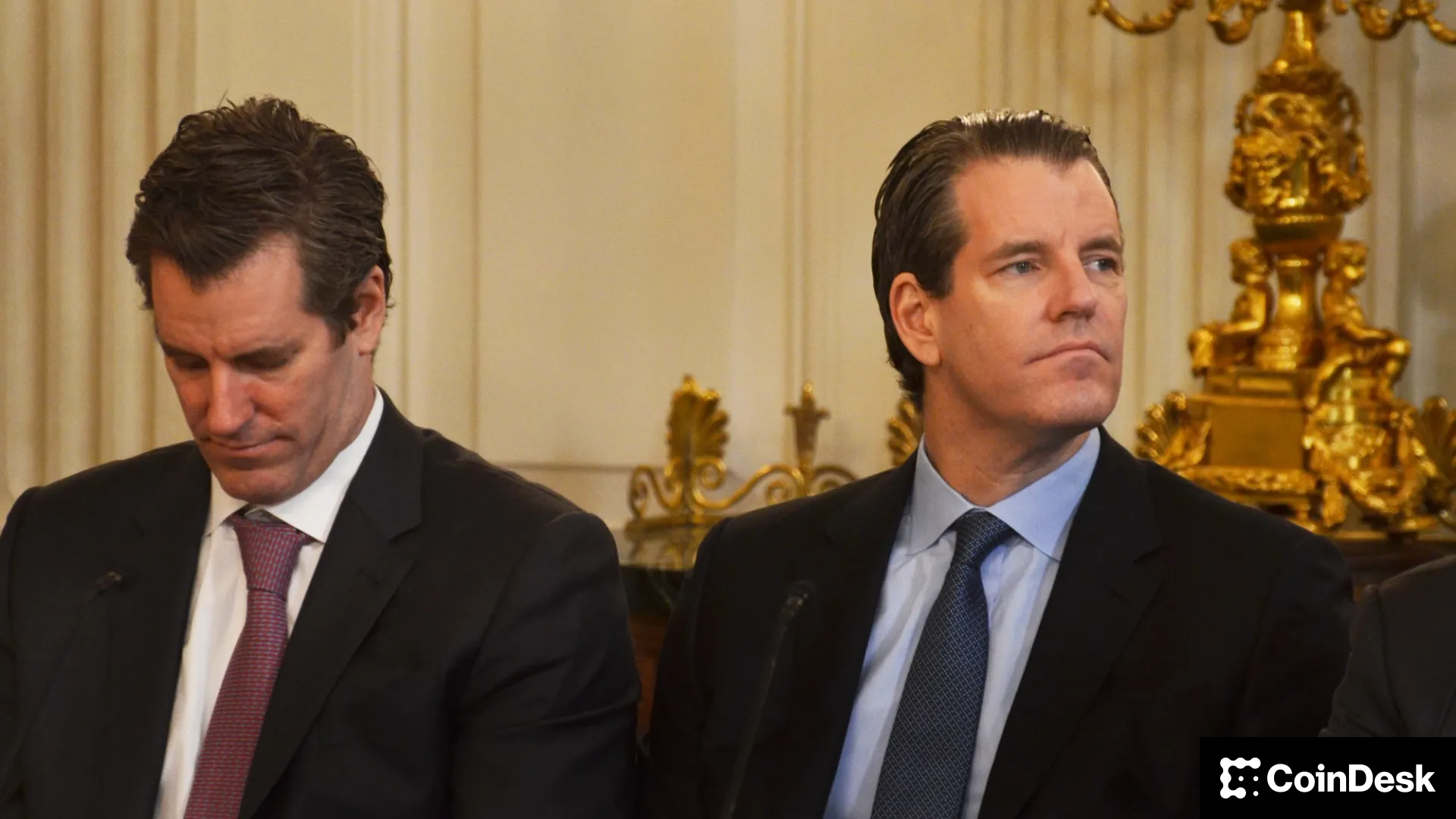Uncategorized
Now Is the Time to Rally to Web3 Gaming

Right now, my X feed is full of people who are giving up on Web3 gaming. I get it. Over $12 billion of venture capital funding has gone into it since 2020 and they haven’t seen the sort of breakout success that many expected. Even the best games haven’t reached anything close to mainstream scale. Token prices are down. Studios are shutting down. And everyone is exhausted.
But measuring Web3 gaming by token prices alone is like calling the internet a failure because of the dot-com crash — it ignores how far the technology has come and where it’s headed. It’s missing the real story.
At its core, Web3 gaming is about giving players real ownership — not just of the in-game items that they buy and earn, but also their identities and achievements. In traditional games, players invest time, effort and money into digital assets that ultimately belong to the publisher. Web3 changes that. By putting assets on-chain, players can truly own what they earn—whether that’s tradable items like weapons or land, or non-transferable badges of reputation, guild history, or verifiable skill. It’s not just about buying and selling stuff — it’s about agency, persistence, and getting proper recognition for what you’ve built and what is really yours in the ecosystem.
The concept isn’t new. Players have wanted more control over their in-game assets for years. Look at the massive markets for CS:GO skins or World of Warcraft gold. But until now, those economies have been fragmented, restricted, or at risk of being shut down if a centralized publisher decides to shut it down or change the rules. Web3 makes these economies open, interoperable, player-owned and player-driven.
Ownership has always been the foundation of Web3 gaming, and play-to-earn was an experimental model that showed the potential for open and permissionless virtual economies on blockchain. Now, the industry is evolving with a stronger focus on sustainable economies and better tokenomics, deeper gameplay, and long-term player engagement.
But if you’re comparing Web3 gaming to Web2 gaming, you’ll be disappointed. Traditional gaming has had decades to fine-tune game design, build massive player bases, and develop business models that work, while Web3 gaming is still in its experimental phase. Sure, billions of dollars of investment can speed things up, but throwing money at a brand new category doesn’t magically buy it a track record or instantly create new games that people love.
I’ve been making games for over 20 years and I have seen every major shift get dismissed before it took over. Nobody believed mobile gaming could compete with PCs or consoles until it became bigger than both. Free-to-play was called a scam until it made more money and reached more players than ever before. Esports was a joke until stadiums sold out and prize pools hit millions. Digital skins were “worthless” before they became a multi-billion dollar market.
And now, Web3 gaming is at that same inflection point.
When I first heard about blockchain in 2018, everyone I knew in FinTech was talking about it. So of course I thought it was boring and I ignored it. It wasn’t until I learned about CryptoKitties that I actually took notice. When I saw people collecting, trading and actually owning these cute on-chain cats, that’s when I got excited because I knew they weren’t like other in-game assets. CryptoKitties were digital things that no one could take away from you. As someone who’s spent their life grinding in games, and their career convincing others to grind the same — without really getting anything for it — that idea of digital ownership gave me a whole new way to think.
So I went all-in on blockchain games. But 2018 and 2019 were really tough times. Pretty much no one else cared back then. There was no support, no real funding, no clear idea of what these games could be beyond speculation, and (outside of a handful of believers) there was very little conviction. The market was in a deep bear cycle, and many teams either gave up or ran out of money before they could launch. Still, some of us kept building. We stayed lean, experimented, and learned everything the hard way. It feels similarly bad now, but not as bad as it was then. Looking back, I’m so glad we didn’t pack it in when success was just around the corner.
When Axie Infinity broke through in 2021, everything changed. Web3 founders like Jeffrey “Jihoz” Zirlin of Sky Mavis, Yat Siu of Animoca Brands, Sebastien Borget of The Sandbox, and me, went from being called crazy to visionary overnight. Suddenly, we were speaking on the main stage at conferences where we used to watch in the audience. We made news headlines and “Most Influential” lists. Investors who ignored our emails were asking how much they could put in. My email inbox filled up with fundraising decks pitching the next YGG.
Then in 2022, the market crashed, and just as quickly, we went back to being crazy. But that never really bothered me because crazy people are the ones who make big things happen.
Now, everyone’s asking: When is the next big Web3 game? The answer is this: good games take time. And if you look past the red candles to take notice of what exists already today, you’ll see we how much progress we’ve made since our industry was seeded in 2018:
In 2020, Axie Infinity had fewer than 500 daily players. Today, Ronin — the blockchain it built — has millions of active users, with 17 new games launched, and 134% growth in NFT trading volume in 2024 compared to 2023. It’s also gone permissionless, which means there will be more games, faster development, stronger network effects, and unpredictably big breakthroughs. Some of the biggest innovations in gaming like modding, free-to-play and esports came from unexpected places. By lowering the barrier to entry, a permissionless Ronin invites the kind of experimentation that could lead to the next Axie-scale success.
Pixels, a farming game on Ronin, hit a peak of 1.3 million daily active users (DAUs) and is holding strong now with around 250,000 DAUs even with its token down 96%. Players are spending more than they cash out, buying land, upgrading assets, and actually putting money back into the game, fueling the economy instead of extracting from it. This is how virtual economies should work, with real demand and strong retention. Most importantly, it is an indication that the play-to-earn model can work if done right.
Parallel, a trading card game (TCG) on Ethereum, just hosted a world championship in Las Vegas at the HyperX Arena — a venue that has hosted some of the biggest esports competitions from “League of Legends All-Stars” to “Street Fighter V’s Capcom Cup.” This was a prestigious event that saw some of the world’s best TCG players crossover from traditional titles like Hearthstone to become some of the first Web3 esports legends.
These are just a few examples, but they show the kind of traction we’re seeing: better infrastructure, growing communities, more sustainable virtual economies, digital ownership.
Those who FUD Web3 gaming today don’t understand it. They missed CryptoKitties in 2018, Axie in 2020, YGG in 2021, and they’ll miss the next wave too because they’re measuring the wrong metrics. Web3 is growing and innovating faster than any other sector in gaming. It’s not time to quit. It’s time to double down. Let them call us whatever they want: crazy, delusional. Visionary, pioneering. It doesn’t change what we do. We’ve been here before. Stay the path.
Business
Crypto Trading Firm Keyrock Buys Luxembourg’s Turing Capital in Asset Management Push

Crypto trading firm Keyrock said it’s expanding into asset and wealth management by acquiring Turing Capital, a Luxembourg-registered alternative investment fund manager.
The deal, announced on Tuesday, marks the launch of Keyrock’s Asset and Wealth Management division, a new business unit dedicated to institutional clients and private investors.
Keyrock, founded in Brussels, Belgium and best known for its work in market making, options and OTC trading, said it will fold Turing Capital’s investment strategies and Luxembourg fund management structure into its wider platform. The division will be led by Turing Capital co-founder Jorge Schnura, who joins Keyrock’s executive committee as president of the unit.
The company said the expansion will allow it to provide services across the full lifecycle of digital assets, from liquidity provision to long-term investment strategies. «In the near future, all assets will live onchain,» Schnura said, noting that the merger positions the group to capture opportunities as traditional financial products migrate to blockchain rails.
Keyrock has also applied for regulatory approval under the EU’s crypto framework MiCA through a filing with Liechtenstein’s financial regulator. If approved, the firm plans to offer portfolio management and advisory services, aiming to compete directly with traditional asset managers as well as crypto-native players.
«Today’s launch sets the stage for our longer-term ambition: bringing asset management on-chain in a way that truly meets institutional standards,» Keyrock CSO Juan David Mendieta said in a statement.
Read more: Stablecoin Payments Projected to Top $1T Annually by 2030, Market Maker Keyrock Says
Business
Crypto Trading Firm Keyrock Buys Luxembourg’s Turing Capital in Asset Management Push

Crypto trading firm Keyrock said it’s expanding into asset and wealth management by acquiring Turing Capital, a Luxembourg-registered alternative investment fund manager.
The deal, announced on Tuesday, marks the launch of Keyrock’s Asset and Wealth Management division, a new business unit dedicated to institutional clients and private investors.
Keyrock, founded in Brussels, Belgium and best known for its work in market making, options and OTC trading, said it will fold Turing Capital’s investment strategies and Luxembourg fund management structure into its wider platform. The division will be led by Turing Capital co-founder Jorge Schnura, who joins Keyrock’s executive committee as president of the unit.
The company said the expansion will allow it to provide services across the full lifecycle of digital assets, from liquidity provision to long-term investment strategies. «In the near future, all assets will live onchain,» Schnura said, noting that the merger positions the group to capture opportunities as traditional financial products migrate to blockchain rails.
Keyrock has also applied for regulatory approval under the EU’s crypto framework MiCA through a filing with Liechtenstein’s financial regulator. If approved, the firm plans to offer portfolio management and advisory services, aiming to compete directly with traditional asset managers as well as crypto-native players.
«Today’s launch sets the stage for our longer-term ambition: bringing asset management on-chain in a way that truly meets institutional standards,» Keyrock CSO Juan David Mendieta said in a statement.
Read more: Stablecoin Payments Projected to Top $1T Annually by 2030, Market Maker Keyrock Says
Business
Gemini Shares Slide 6%, Extending Post-IPO Slump to 24%

Gemini Space Station (GEMI), the crypto exchange founded by Cameron and Tyler Winklevoss, has seen its shares tumble by more than 20% since listing on the Nasdaq last Friday.
The stock is down around 6% on Tuesday, trading at $30.42, and has dropped nearly 24% over the past week. The sharp decline follows an initial surge after the company raised $425 million in its IPO, pricing shares at $28 and valuing the firm at $3.3 billion before trading began.
On its first day, GEMI spiked to $45.89 before closing at $32 — a 14% premium to its offer price. But since hitting that high, shares have plunged more than 34%, erasing most of the early enthusiasm from public market investors.
The broader crypto equity market has remained more stable. Coinbase (COIN), the largest U.S. crypto exchange, is flat over the past week. Robinhood (HOOD), which derives part of its revenue from crypto, is down 3%. Token issuer Circle (CRCL), on the other hand, is up 13% over the same period.
Part of the pressure on Gemini’s stock may stem from its financials. The company posted a $283 million net loss in the first half of 2025, following a $159 million loss in all of 2024. Despite raising fresh capital, the numbers suggest the business is still far from turning a profit.
Compass Point analyst Ed Engel noted that GEMI is currently trading at 26 times its annualized first-half revenue. That multiple — often used to gauge whether a stock is expensive — means investors are paying 26 dollars for every dollar the company is expected to generate in sales this year. For a loss-making company in a volatile sector, that’s a steep price, and could be fueling investor skepticism.
-

 Business11 месяцев ago
Business11 месяцев ago3 Ways to make your business presentation more relatable
-

 Fashion11 месяцев ago
Fashion11 месяцев agoAccording to Dior Couture, this taboo fashion accessory is back
-

 Entertainment11 месяцев ago
Entertainment11 месяцев ago10 Artists who retired from music and made a comeback
-

 Entertainment11 месяцев ago
Entertainment11 месяцев ago\’Better Call Saul\’ has been renewed for a fourth season
-

 Entertainment11 месяцев ago
Entertainment11 месяцев agoNew Season 8 Walking Dead trailer flashes forward in time
-

 Business11 месяцев ago
Business11 месяцев ago15 Habits that could be hurting your business relationships
-

 Entertainment11 месяцев ago
Entertainment11 месяцев agoMeet Superman\’s grandfather in new trailer for Krypton
-

 Entertainment11 месяцев ago
Entertainment11 месяцев agoDisney\’s live-action Aladdin finally finds its stars




